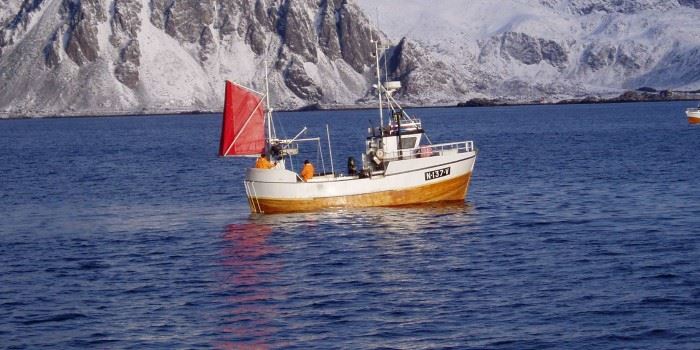Boat builders Selfa Arctic AS in Trondheim are building a hybrid fishing vessel in close collaboration with Norwegian fisherman and SINTEF researchers. According to Selfa’s General Manager Erik Ianssen, the first boat off the line in October will be equipped with a battery-driven electric engine.
“The challenges we have faced to date have involved finding robust and reasonably-priced battery designs”, says SINTEF Project Manager Jørn Eldby. “But this is achievable with state-of-the-art technology”, he says.
In order to assess the vessels’ power requirements, SINTEF has carried out a series of simulations for small fishing boats in a variety of operational modes. Calculations indicate that the energy consumed in travelling to and from the fishing grounds constitutes between 60 and 70 per cent of total consumption for an entire fishing trip.
A cost-saving solution
“We also know that the time spent travelling to and from the fishing grounds is only a quarter of that spent fishing”, says Eldby. “Our aim has been to design the battery capacity in a way that enables actual fishing activities to be carried out without running the diesel engine. This will significantly reduce wear and tear on the engine – compared with the current situation in which it idles for the greater part of the day”, he says.
SINTEF has also made calculations of costs and savings scenarios for the hybrid designs under consideration. It is expected that, after some years, higher investment costs will be offset by ever-cheaper batteries and reduced operations and maintenance costs.
“We see a bright future for hybrid fishing vessels, both in terms of technology and costs”, says Eldby. “Under normal operations, fuel consumption will be reduced by more than a third”, he says.
Starting with small boats
These figures have encouraged Trondheim boat builders Selfa Arctic AS to make the idea of a small, hybrid, fishing vessel a reality – and the company is full of optimism for its hybrid design.
“We’re putting a lot of effort into environmentally-friendly vessels and have noticed that the fishermen themselves are very interested”, says Selfa’s Erik Ianssen. “Our impression is that both vessel owners and the industry in general are interested in environmentally-friendly vessel designs”, he says. “We have also received positive feedback from the environmental organisation Bellona, with whom we are working on several projects. They also welcome the introduction of this type of vessel”, says Ianssen.
Selfa is also building a hybrid ferry with space for between 25 and 30 passengers, although this needs a slightly different design because accommodating this many people requires a lighter hull construction.
Environmental benefits
The idea is that the fishing boat will be powered by electricity to and from the fishing grounds, with the diesel engine kicking in as and when required. The electric engine will keep the boat running when fishing is being carried out.
This will generate major positive environmental benefits in the form of reductions in CO2 emissions as a direct result of reductions in fuel consumption. It will also improve the fishermen’s working environment. SINTEF believes that the noise and pollutants generated by a pounding diesel engine make their job very demanding.
Long lifetime
The batteries installed in the boat now under construction can be recharged between 4,000 and 15,000 times. According to SINTEF, if a fisherman spends 150 days a year at sea, and the vessel has to be recharged prior to each trip, then the expected lifetime of the hybrid engine will be 25 years, which is the same as for a standard diesel engine.
The engine design selected for this boat is a so-called ‘series hybrid’. This means that between 70 and 100 per cent of power is provided by the battery, which is supported by a diesel engine located at the end of the driving line.
“The vessel will be powered even if the batteries go flat, but it also has an essential safety function”, explains Ianssen.
“We also see a major potential for smaller hybrid vessels for the aquaculture and port service sectors”, says Eldby. “In these situations there is less need for expensive diesel back-up systems. The distances to recharging stations will be short, which will promote the development of clean, and less expensive, battery designs”, he says.
Selfa has obtained funding for this project from both Transnova and the Norwegian Fishery and Aquaculture Research Fund (FHF).

